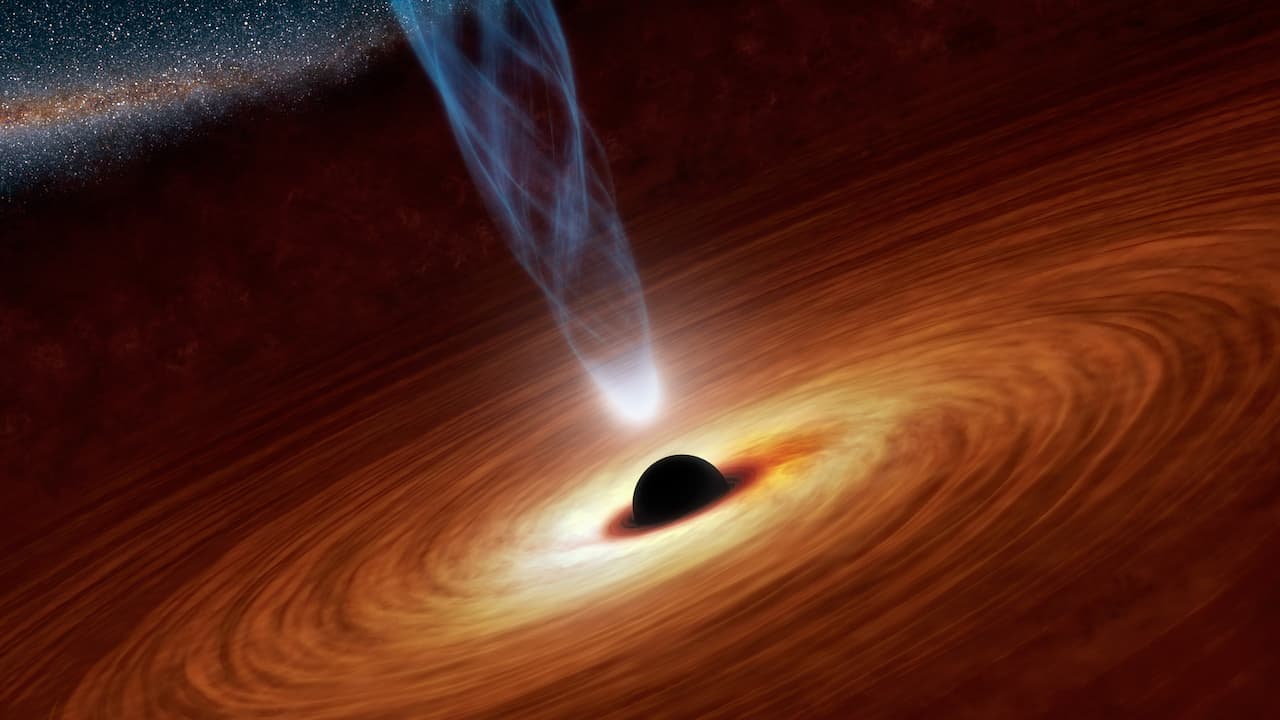The vast vast universe contains potential dangers for galaxies and planets. Nothing is as big, powerful, and terrifying as a Black Hole. It devours every planet, star, or anything close to it, including light. Black holes break all the laws of physics, dominate the evolution of the Universe.
Cosmic black hole
In 1783 John Michell showed that a sufficiently dense and massive star could have a gravitational field so strong that no light could escape. These things we call Black Holes.
A black hole is really just an empty space, more specifically a large amount of matter squeezed into a very small volume. Imagine a star ten times as massive as the Sun squeezed into a sphere approximately the diameter of a ball. You can understand how heavy and dense it is, right?
If the gravitational field of a black hole is infinite, then anywhere in the universe it must be infinitely large. Then all matter in the universe would be “swallowed up”. But at a large enough distance, the black hole seems to be quite “gentle” and does not affect anything.
Things are terrible if you step over the event horizon.
You can imagine a black hole as a waterfall, gravity is the river water flowing towards the waterfall and all matter like a canoe is drifting with the water. When you are far away, the current is still weak and you can still row against the current and get out, but when you are near the cliff where the current is extremely strong, no matter where you row, you will fall. That cliff for a black hole is called the “Event Horizon,” where everything ends and the laws of physics are broken.
Formation
To understand how a black hole is formed, let’s start with the life cycle of a star. A star is formed when a cloud of matter (mostly hydrogen) contracts due to their own gravitational pull. Then the molecules collide with each other at great speed and the gas will heat up. At some point, a nuclear reaction occurs between the atoms, forming a helium atom and releasing a huge amount of energy that makes the star glow.
The amount of heat generated increases the pressure of the gas mass until it balances with the force of gravity between them and then the gas will stop contracting. It’s like a hot air balloon where the balance between the air pressure inside tends to inflate it, while the tension in the balloon’s shell tends to cause it to contract. Until the amount of hydrogen is exhausted, the fusion reaction will stop, the star becomes cold and begins to contract, marking its own demise.
Stars with enough mass will begin to contract under their own gravity, and when a certain radius is reached, the gravitational field in the core becomes extremely strong and a small black hole is born right next to it. in core . It then began to suck up the rest of the star and eventually explode while releasing a tremendous amount of energy. What remains is a new black hole and energetic rays floating around the universe called Gamma rays.
Gamma rays are released into the universe.
In 2004, Nasa launched the Swift probe to scan for gamma-ray bursts in space. Surprisingly, on average, the spacecraft detects at least one gamma-ray burst in space every day. This discovery has shaken astronomy with the existence of billions of black holes that exist in the universe.
Destroy everything
Black holes are considered as a fierce god in the universe. It can destroy everything nearby. Beyond the event horizon, a black hole can be very gentle until you step inside, everything becomes a nightmare, time stops, gravity becomes infinite.
The day the Black Hole enters the Solar System, that day is the end of the world. Extreme gravity will disrupt the balance of gravity from the sun. Stars and planets will fly everywhere, colliding with each other and Earth is no exception. Not only that, if it comes close to Earth, it will suck up both the atmosphere and then all the matter that exists on our planet. When you step over the event horizon, gravity will be stronger than ever and any matter that exists on your body will be completely torn apart. But outside you won’t see that happening because time inside the event horizon is infinitely slower.
But forming galaxies
Astronomer Andrea Ghez used a special telescope to photograph the stars at the center of the galaxy. He noticed that the stars at the center of the Galaxy move at a faster rate than anywhere we have observed. Perhaps something formidable is going on at the center of the Milky Way, a powerful gravitational pull that can send massive stars traveling so fast in such narrow orbits. Yes, there is only one such thing in the universe, a giant Black Hole. This is a big discovery: all the galaxies in this universe revolve around a Black Hole.
The Sun revolves around a giant black hole Sagittarius A*. Photo: NASA’s Goddard Space Flight Center.
To understand better, let’s go back to the golden age of the Universe. Stars are born and then some collapse to create black holes. Those black holes under the influence of gravity will come close to each other and merge into a supermassive black hole. For about 100 million years, each black hole sucks in countless stars and clouds of gas, then reaches a limit where it will emit a burst of energy in the form of extremely intense radiation called a quasar. The black hole continues to suck in the surrounding gas, and the quasars are constantly emitted. When there is no more gas to create stars, the galaxy stops growing, the quasars also die. A new galaxy is formed and the final size will depend on the central black hole.


